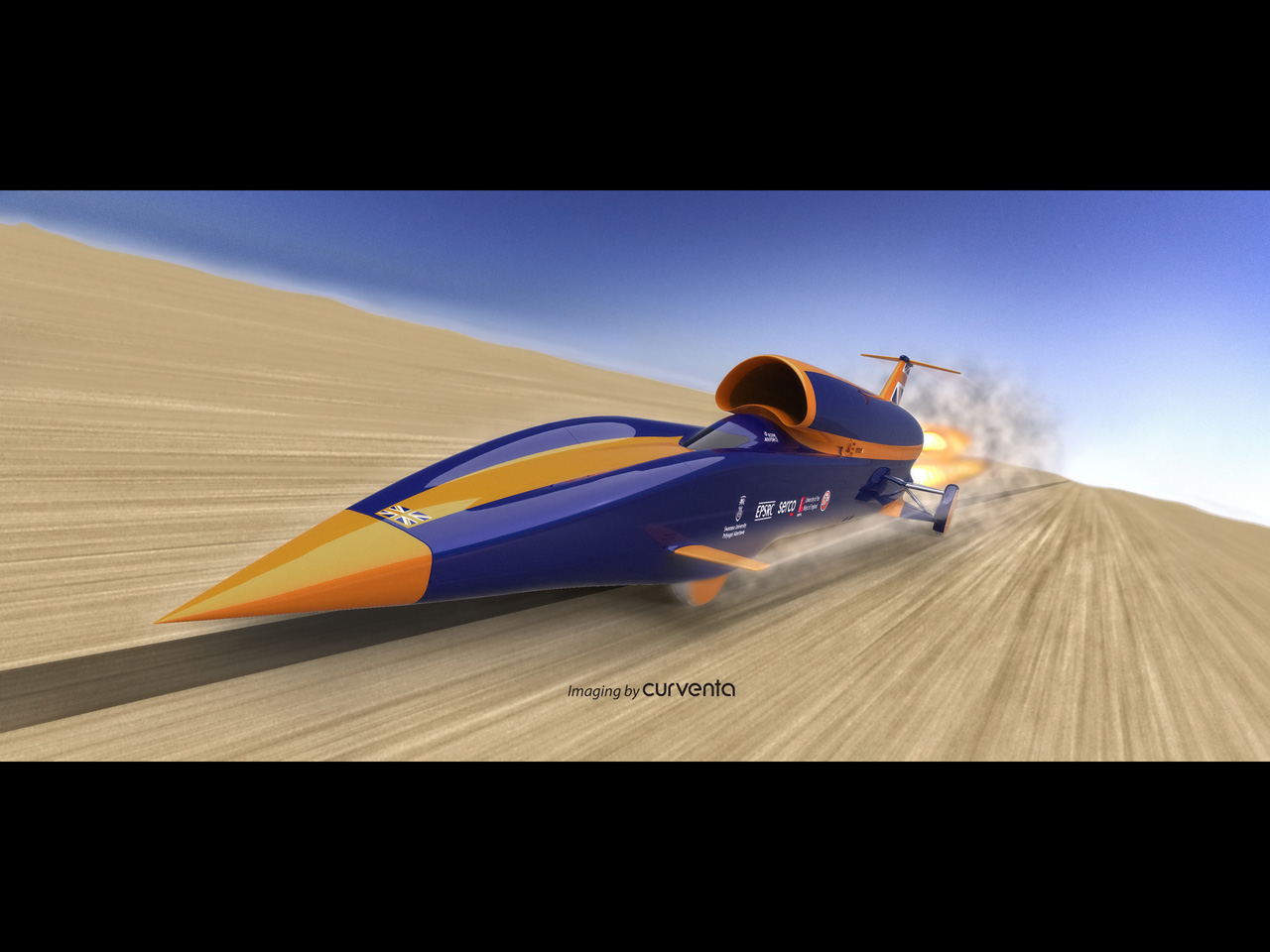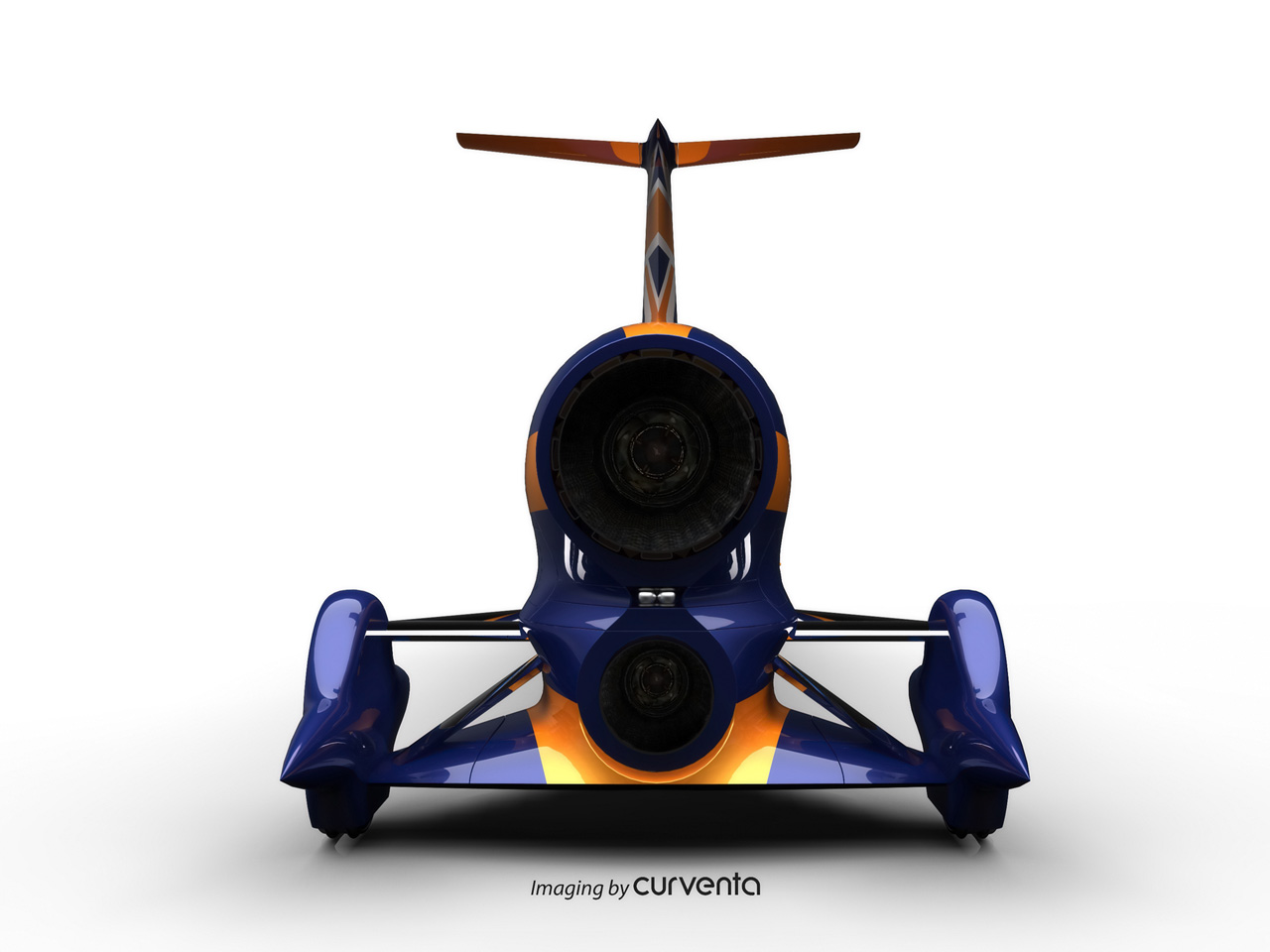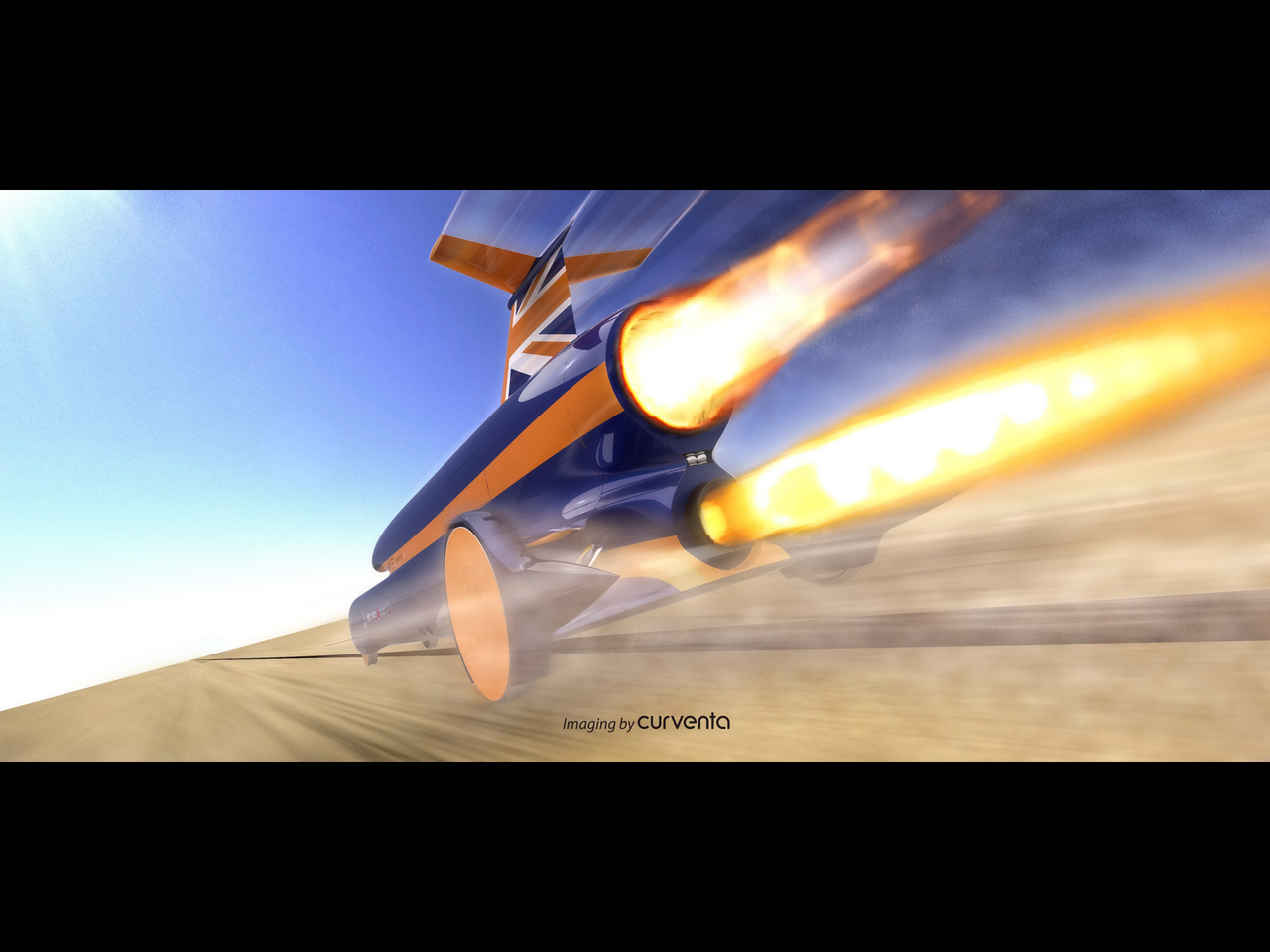2009 Bloodhound SSC Concept
|
Price |
-- |
Production |
-- | ||
|
Engine |
Hybrid Rocket |
Weight |
-- | ||
|
Aspiration |
-- |
Torque |
-- | ||
|
HP |
-- |
HP/Weight |
-- | ||
|
HP/Liter |
-- |
1/4 mile |
-- | ||
|
0-62 mph |
-- |
Top Speed |
1000 mph (target) |
(from Bloodhound
Press Release) The car
We have a wonderful opportunity with BLOODHOUND: an opportunity to
create the ultimate Land Speed Record car. When we designed and
built Thrust2 we had the objective of achieving a peak speed of 650
mph, just beyond the existing record of 622.407 mph held by Gary
Gabelich in Blue Flame.
Then came ThrustSSC, which raised the Thrust2 record by a whopping
130 mph – that’s 20%. But BLOODHOUND is different - so different.
The target is 1,000mph - that’s a 31% jump and there is no way that
the BLOODHOUND SSC is going to look like anything we have seen
before.First, the all-important powerplants. We have chosen a jet
and hybrid rocket. The reasoning is that we need the rocket for its
raw power and lack of draggy air intake, but the downside is that
the rocket is an on/off device and with rocket power alone we would
have real difficulty hitting and holding selected Mach numbers for
the aerodynamicists to gain their data. And at these speeds we have
to tread very carefully, increasing the Mach numbers in small,
careful steps.
So we need power controllability and this is where the beautiful
Eurojet EJ200 comes in. The Typhoon engine is incredibly small and
light for its power and of course is a fully developed engine,
enabling us therefore to control the output of the combination of
rocket and jet by throttling the jet alone.
The car has to run through a wide speed range and keep the same
loads on all four wheels - much as ThrustSSC did. The little
winglets above the wheels are fully dynamic trimmers making small
adjustments in microseconds. They are not there to develop massive
download as needed for a wheeldriven circuit-racing car, but simply
to maintain constant wheel load up to Mach 1.4.
In the middle of the BLOODHOUND SSC is the MCT V12 800 bhp race
engine which doubles as our APU delivering hydraulic power as
needed, starting the EJ200 and of course pumping the High Test
Peroxide (HTP) through to the Falcon rocket. The pump has to move a
ton of HTP through to the rocket catalyst in 22 seconds and at 1200
psi. The beauty of the hybrid rocket is that it uses a safe and
green oxidiser in the shape of HTP and only burns its solid fuel as
long as the HTP is flowing. Shut the HTP flow off and the rocket
shuts down in safety. No emergency problems of having mechanically
to jettison a burning solid fuel rocket or running the risk of an
explosion from shutting down a bi-propellant rocket with horizontal
combustion chambers.
The BLOODHOUND SSC shape is completely different to anything seen
before. We need to minimise the cross-sectional area to minimise
drag, but we also need a supersonic intake and a smart suspension
system which will enable the car to run smoothly over the rough salt
surfaces. Because the rocket is positioned above the EJ200 and thus
raises the centre of gravity, we will need to position the rear
wheels on suspension outrigged on draggy struts. In the past this
was always seen as a huge aerodynamic disadvantage - one that made
the famed Budweiser Rocket wheelbarrow at times - but today running
computational fluid dynamics (CFD) with multi-million elements we
can compute the drag of the wheels and struts at Mach 1.4 and
optimise the shape to minimise drag and shock effects.
In ThrustSSC Andy’s cockpit was positioned comfortably between the
two Spey 202 afterburning turbofan engines but in the BLOODHOUND SSC
design packaging of all the components including Andy has been a
difficult issue. He and his cockpit have ended up just under the
EJ200 intake, with the cockpit external shape being a part of the
all important intake shock management structure. Andy has lost out
on comfort value there, but that’s one of the compromises that have
been necessary in developing a Mach 1.4 car.
The rear wheel covers are going to attract considerable attention as
they look like something from a sci-fi movie. We have to reduce
supersonic drag -hence the pointed parts front and rear - and also
protect the upper surface of the wheel from the oncoming airflow
where, if unprotected, it would reach Mach 2.8. Inside the
wheelarches there are also problems – the 900 mm (35.8 in) wheels
are wasting energy winding up and whirling the airflow in the wheel
bays, so we have to ventilate the bays to reduce power losses.
The fin is also very small – traditionally these Land Speed Record
cars have had big fins to ensure good stability in yaw. But too much
fin means a car which will severely be affected by crosswind and not
enough fin means that the car will be directionally unstable. One of
the key design issues is whether we have enough fin area to control
the car directionally when we bring in the afterburner and the
rocket at low Mach numbers. The designers believe that BLOODHOUND
SSC has very good directional stability and will probably only need
that small fin.
So when BLOODHOUND SSC finally emerged in Config 3 status, I was
very pleased – like I said earlier, it looks like nothing we have
ever seen before. And that’s just how it should be…



